For the second consecutive year, my hometown of Grand Rapids MI is hosting ArtPrize, a citywide art festival that will end this coming weekend with the award of $449,000 in cash prizes, including a cool quarter-million to the overall winner. ArtPrize has come up with a hybrid of Facebook-style “liking” and American Idol’s popularity contest to determine the winners, and with votes cast by a wide cross-section of the general public, it’s not surprising that some of the artists who are serious about becoming finalists base their appeal to the masses more on kitsch and cleverness than on refined artistic techniques or challenging thematic statements. Last year, one of the big money winners was a guy who made large portraits of attractive women using red, yellow, blue, black and white push-pins as his pixels. Anyone who’s ever worked with the most rudimentary digital paint program could see what he was up to, but his trick impressed enough people to put $50,000 in his bank account.
So of course that easy formula spawned a host of imitators this year. Walking around the various galleries and public spaces, I’ve seen portraits of Martin Luther King made from Rubik’s Cubes, a Rwandan refugee’s face rendered in discarded wine corks, a giant penny constructed from thousands of actual pennies, the Seven Days of Creation depicted in the form of broken crayon pieces, a Mona Lisa fashioned out of tinted ceramic cups, a coffin constructed of used cigarette butts (get it, coughin‘?), all sorts of animals welded together from various scraps of metal and, most annoyingly, a postcard-variety cityscape of downtown Grand Rapids consisting of tiny foam balls, blatantly titled The Grand Pixel, pretty much shoving the digitized “assembly kit” nature of the work in our face.
Maybe I sound like an art snob, which is fine by me, but if you are going to cobble together discarded junk or assemble incongruous everyday items into a finished piece of art, my only request is that you present it in a form that says something rather than assume you can wow me with an optical illusion. I know that digital images can easily be broken down into tiny dots. Using some oddball media to patiently replace the electronic pixels that you’ve graphed out on your computer monitor is mere technique, especially when the final image is derivative, pedestrian or both.
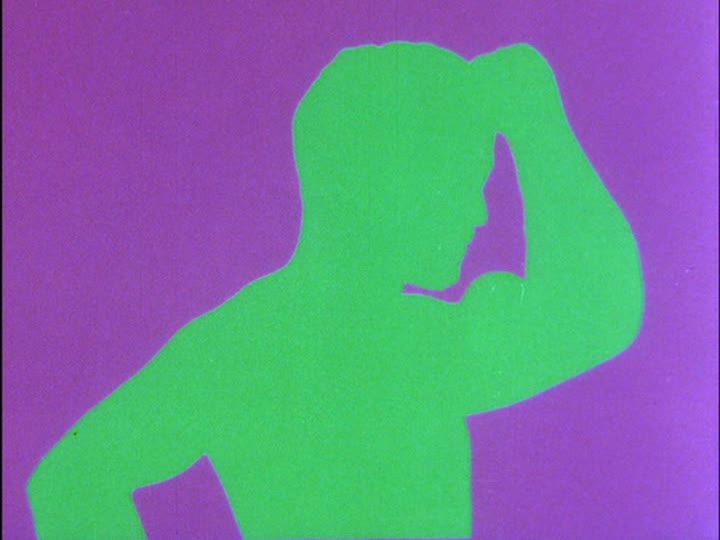

Don’t get me wrong though, I have nothing against using found objects in mixed media art; I’ve done that kind of stuff myself before. Reassembling the detritus of modern life can be an especially effective means of delivering subversive and thought-provoking messages. Of course, the more obvious the subversion or troubling the thoughts provoked, the greater degree of resistance and interference an artist can expect from the arbiters of public taste and decency. Few filmmakers can claim to have experienced the kind of fallout that proved disruptive to a career more than Serbian filmmaker Dušan Makavejev.
Though his early films won international awards and a degree of fame that is still unrivaled by any other filmmaker of his nation, past or present, Makavejev eventually pushed beyond the limits of good taste much further than his Yugoslavian Communist censors could allow. He was first stripped of his party membership, then forced into exile after his 1970 film WR: Mysteries of the Organism proved too potent a mix of sex and politics on the screen. But this week’s Eclipse title precedes that particular scandal. Innocence Unprotected, from Eclipse Series 18: Dusan Makavejev – Free Radical, offers a great example of how a true artist can take cast off bits from the past and assemble them into a new work that speaks meaningfully to present and future viewers.
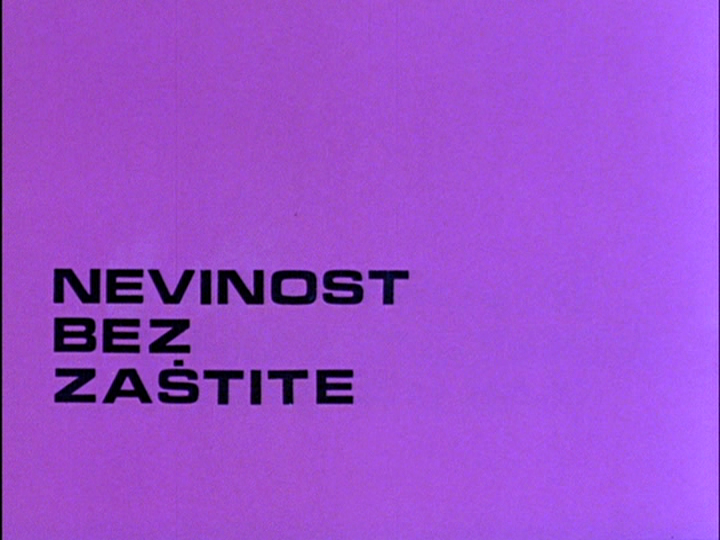

The fact that Innocence Unprotected is also one of the most absurdly funny films I’ve seen in either the Eclipse Series or the Criterion Collection goes a long way in making its case. It’s not a straight-up comedy though – indeed, there are some very somber moments along the way. My amusement is based on the recklessly satirical nerve Makavejev shows in putting his movie together. The core of the film consists of footage originally shot in the midst of World War II, including an original potboiler melodrama, also titled Innocence Unprotected, the very first feature-length film ever made in the Serbian language as a matter of fact. But it wasn’t legally registered or preserved in the annals of Yugoslavian cinema, because the circumstances of its creation involved the bribed assistance of occupying German soldiers in obtaining black market film stock. (The director also admits that the only reason he made the film was the supply of cornbread he was offered in exchange for his labors.) It was also determined after the war to have “pro-Nazi” content, which made the film unacceptable for public showing as Yugoslavia took its place within the Soviet bloc.
With stiff amateur acting, beginner’s level (or worse) cinematography and a corny, blatantly self-promoting script written by Innocence Unprotected‘s central protagonist, professional stuntman Dragoljub Aleksic, it’s safe to say we wouldn’t be missing much if the film had remained lost to history. But in 1968 Makavejev, possessed of the kind of wickedly irreverent imagination that fueled William Klein’s Mr. Freedom, created in France around the same time, saw potential that eluded his contemporaries. He spliced in vintage source materials from the WWII era and interviews with the surviving cast and crew that made the original Innocence Unprotected some 20 years earlier, added some requisite late-60s day-glo tints to the old clips and reshuffled it all to make a poignantly moving essay film that captures both the plight and the resilience of his fellow citizens in that godforsaken crossroads of Europe. A brief newsreel clip, for example, shows how they made industrial-strength drive belts for their factory equipment out of cardboard due to steel shortages.
From now on, whenever I feel prone to lamenting the shifting political and economic tides that periodically occur here in the USA, I will try to stop and consider the experience of a nation like Serbia, which was basically used as a doormat by Nazis and Stalinist troops alike back in the 1940s and afterward, and of course more recently went through a period of agonizing destruction in the 1990s as NATO forces descended on their territory in their effort to defeat Slobodan Milosevic in a war that I honestly have never taken the time to try and comprehend.
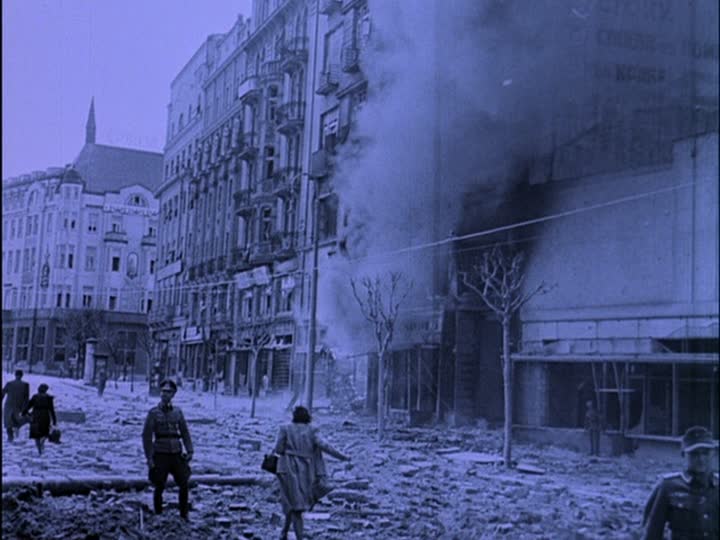
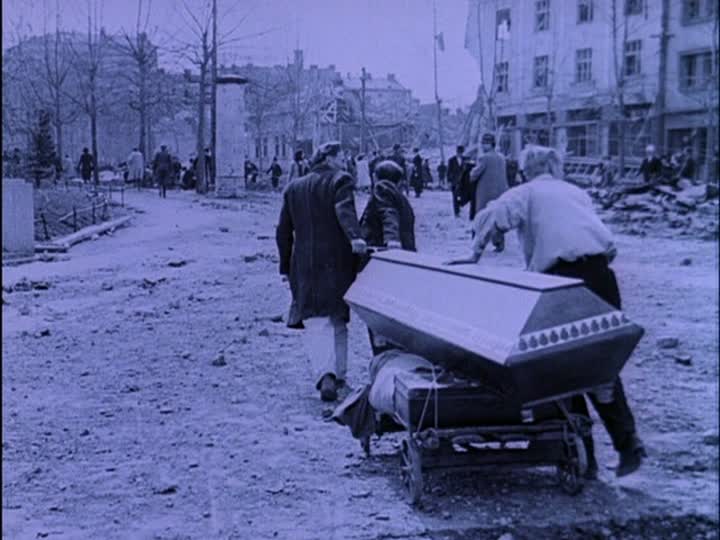
I mentioned the stuntman Dragoljub Aleksic just briefly in passing, but in truth he is the charismatic presence around whom the whole movie revolves, the beating heart of Innocence Unprotected. What a character! A Houdini-like self-promoting hustler who loved the spotlight, quite proud of his muscular physique (though hardly ripped by today’s standards, he does boast a nicely defined bicep) and with a steadfast confidence honed by simply surviving who knows how many setbacks and reversals of fortune throughout the tumultuous decades he’d lived through, Aleksic is a man of endless surprises. He first made his mark as a strong-man, mastering tricks like breaking out of padlocked chains with his bare hands, bending metal bars by holding them in his teeth and striking heroic poses. Not content to stop there, he added daredevil stunts to his repertoire: balancing atop rickety towers of junk, suspending himself by his knees on high-wires over city squares, hanging by his teeth from the bottom of an airplane. But why read what I have to say about it when you can watch the man himself – both his younger (1940s) and older (1960s) selves, in the following clip!
What the clip fails to provide though is the distinctive touch applied by Makavejev that transforms amusing archival snippets into something of lasting cinematic value. To get the effect, you’ll just have to watch the film yourself. There are some longer segments from Innocence Unprotected available online, but they lack subtitles and I figure most readers here would miss what’s going on. His interviews with Aleksic are loaded with anecdotes that subtly elevate his crowd-pleasing stunts into metaphors for the Serbs struggles to find a way through the hardships imposed by troops that ravaged their land.
Rather than tell the story in a straightforward, “inspirational” manner, Makavajev interpolates the high theatrics of Aleksic’s death-defying feats, grim footage of civilians retrieving the corpses of loved ones from Belgrade’s ruins and samplings of Soviet and German propaganda into the hackneyed, simplistic storyline of the original Innocence Unprotected. In that earlier version of the film, Aleksic plays himself, the love interest of beleaguered orphan girl Nada who’s being set up by her wicked foster mother to be married off to Petrovic, a monstrous old fiend who consider Aleksic his inferior in every meaningful way.
Petrovic’s denunciations give Nada the chance to defend her man and celebrate his achievements, and open the door for Makavejev to editorially liken Petrovic’s attempted rape of Nada to Nazi incursions into Eastern Europe. And of course, when Nada becomes the inevitable damsel in distress, Aleksic is ready to come to the rescue, even allowing himself to be hit hard over the head with what look like real boards in the climactic fight scene. The effect is funnier and more audacious in the execution than my words can adequately convey – Makavejev shows himself to be a master at making the whole greater than the mere sum of its parts.
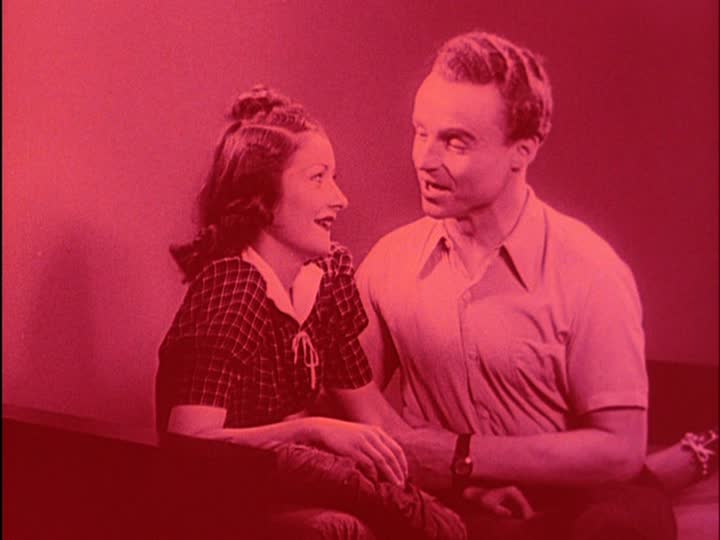

Besides the plucky Aleksic, who apparently served some jail time for inadequate safeguards in a “human cannonball” act that resulted in the deaths of several women, we meet a number of other similarly scrappy characters, many of whom worked for free in making the original Innocence Unprotected, thinking they were destined to become movie stars for their effort. They provide some colorful moments, but Makavejev can’t help but return to Aleksic every few minutes or so. Or perhaps its Aleksic’s magnetism that makes him irresistible to the camera, as he always seems to be holding back one more story, one last secret that’s proven to be the key to an impressive retention of strength and agility at his advanced age.
There’s a hint of scammery at work through the whole production, of course, and I’d easily put the 1968 version of Innocence Unprotected in the same category as Orson Welles’ F for Fake, made just a few years later, and (based on what I’ve read) more contemporary exercises in flim-flam like Exit Through the Gift Shop and I’m Still Here. The main difference between Aleksic’s story and the other films I just mentioned is found in the background. Serbia, whatever sins it may have committed as a nation at various points in the 20th century, really paid a heavy price in social and geopolitical terms, a debt for which I figure they’re still in arrears.
As Aleksic performs his stunts, the fluttering Serbian flags he waves are anything but signs of surrender – they remind us that even if his life is perilously perched atop the “Tower of Death” or hanging by a strap gripped only in firmly clenched jaws, he’s still his own master, fighting, clinging, resisting right up until whatever end fate has in store.
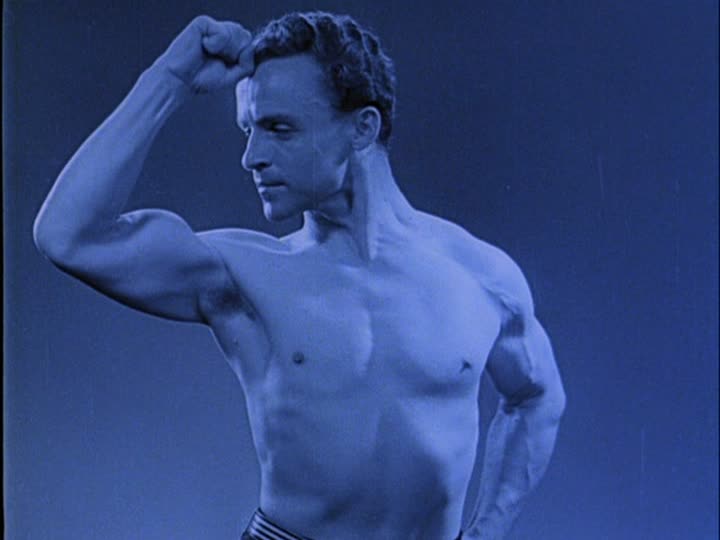
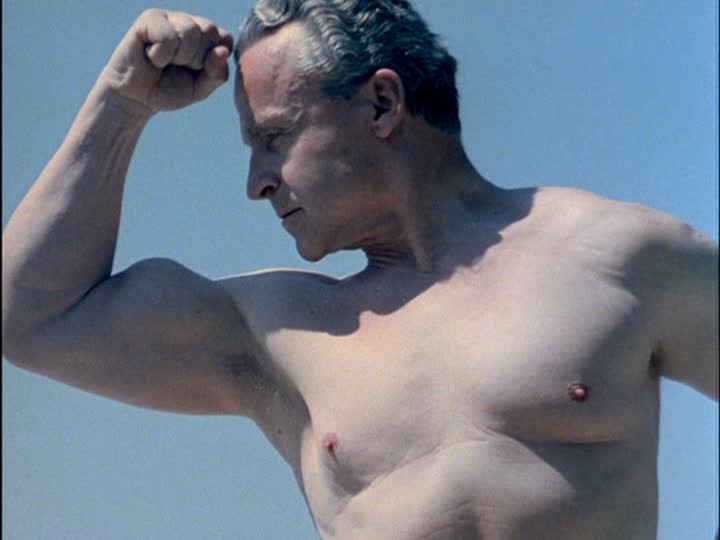


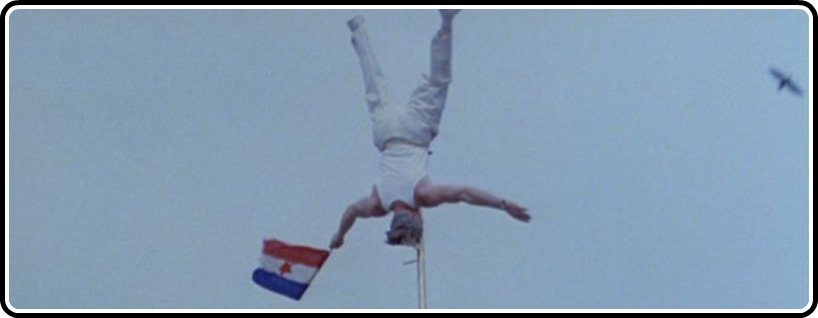

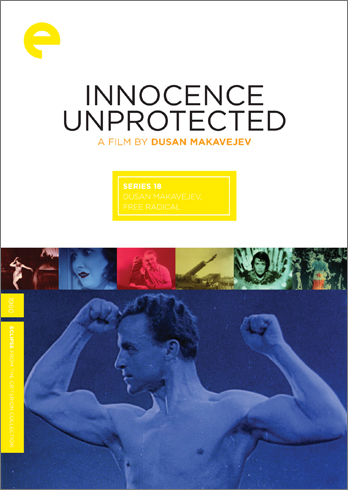

![Bergman Island (The Criterion Collection) [Blu-ray]](https://criterioncast.com/wp-content/uploads/2022/11/bergman-island-the-criterion-collection-blu-ray-400x496.jpg)
![This Is Not a Burial, It’s a Resurrection (The Criterion Collection) [Blu-ray]](https://criterioncast.com/wp-content/uploads/2022/11/this-is-not-a-burial-its-a-resurrection-the-criterion-collection-blu-ray-400x496.jpg)
![Lars von Trier's Europe Trilogy (The Criterion Collection) [The Element of Crime/Epidemic/Europa] [Blu-ray]](https://criterioncast.com/wp-content/uploads/2022/11/lars-von-triers-europe-trilogy-the-criterion-collection-the-element-of-400x496.jpg)
![Imitation of Life (The Criterion Collection) [Blu-ray]](https://criterioncast.com/wp-content/uploads/2022/11/imitation-of-life-the-criterion-collection-blu-ray-400x496.jpg)
![The Adventures of Baron Munchausen (The Criterion Collection) [4K UHD]](https://criterioncast.com/wp-content/uploads/2022/11/the-adventures-of-baron-munchausen-the-criterion-collection-4k-uhd-400x496.jpg)
![Cooley High [Criterion Collection] [Blu-ray] [1975]](https://criterioncast.com/wp-content/uploads/2022/11/cooley-high-criterion-collection-blu-ray-1975-400x496.jpg)
1 comment